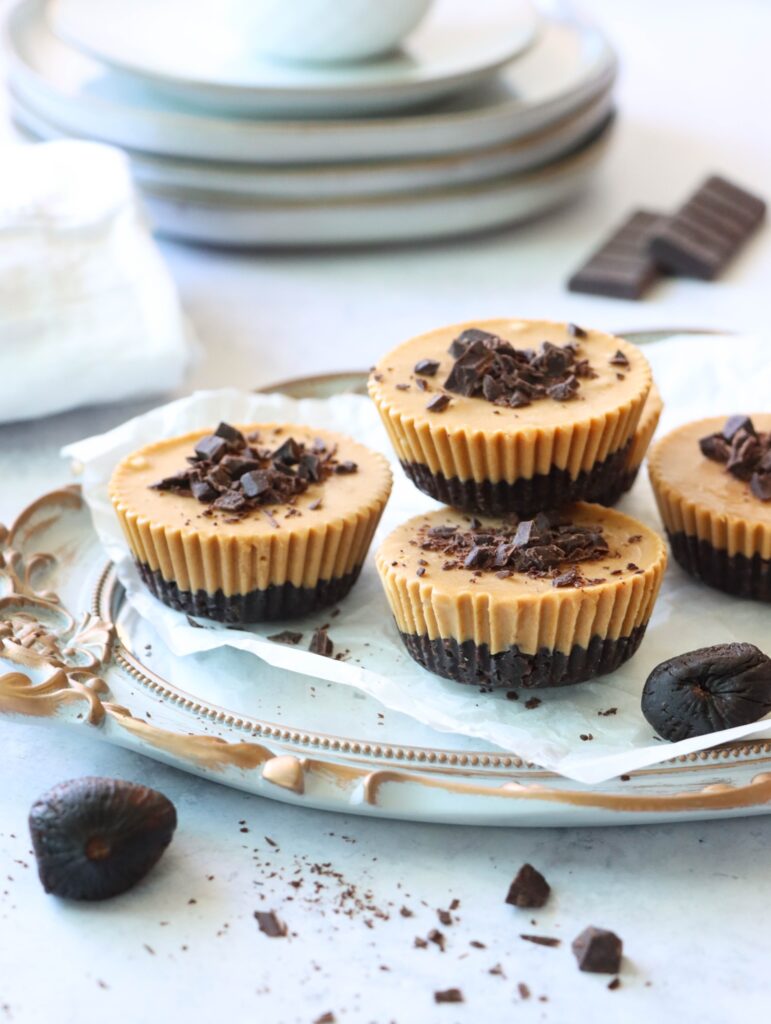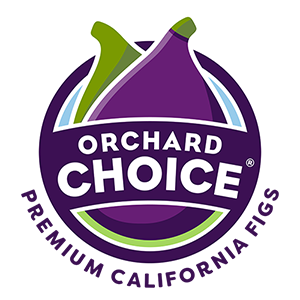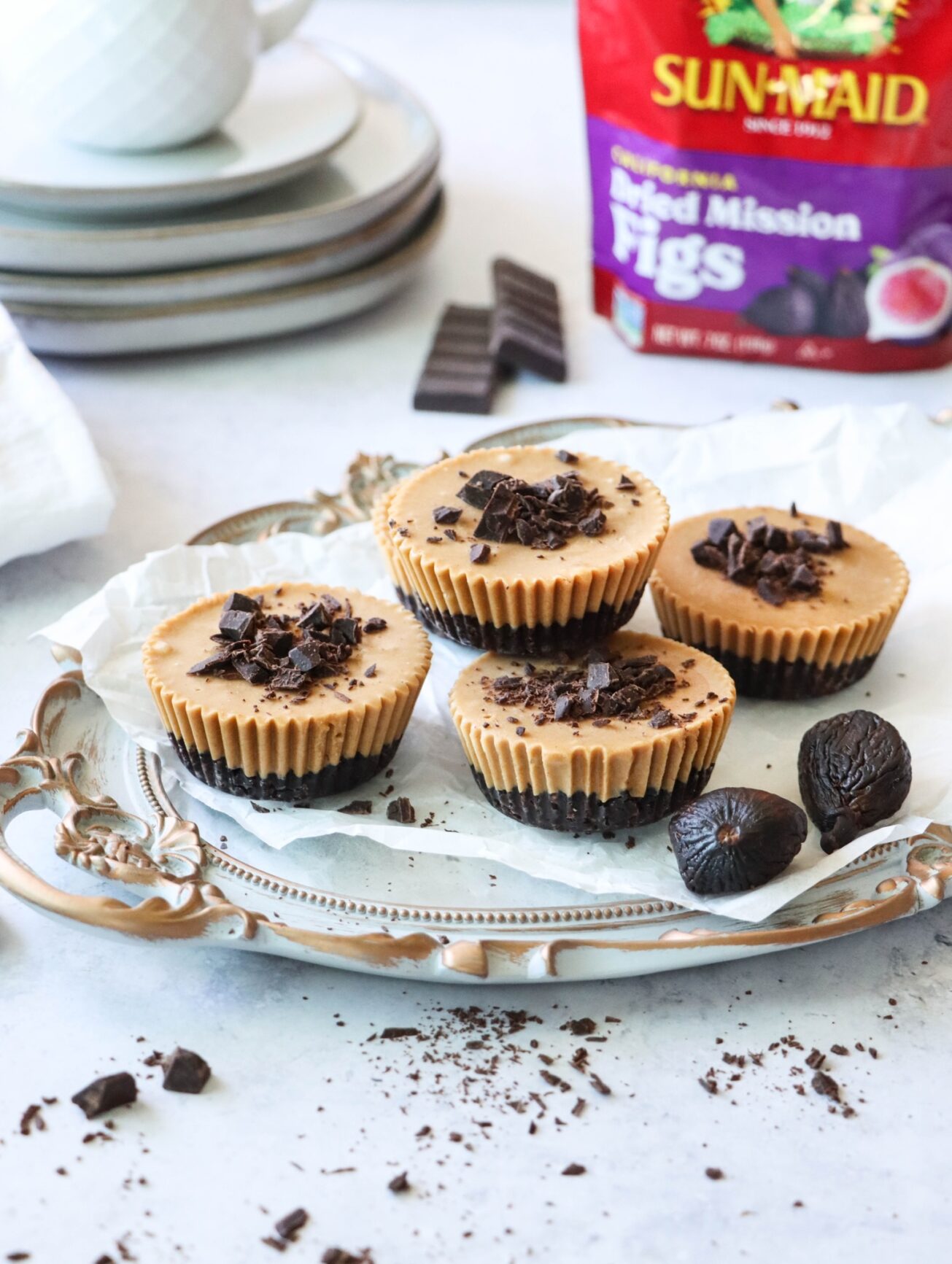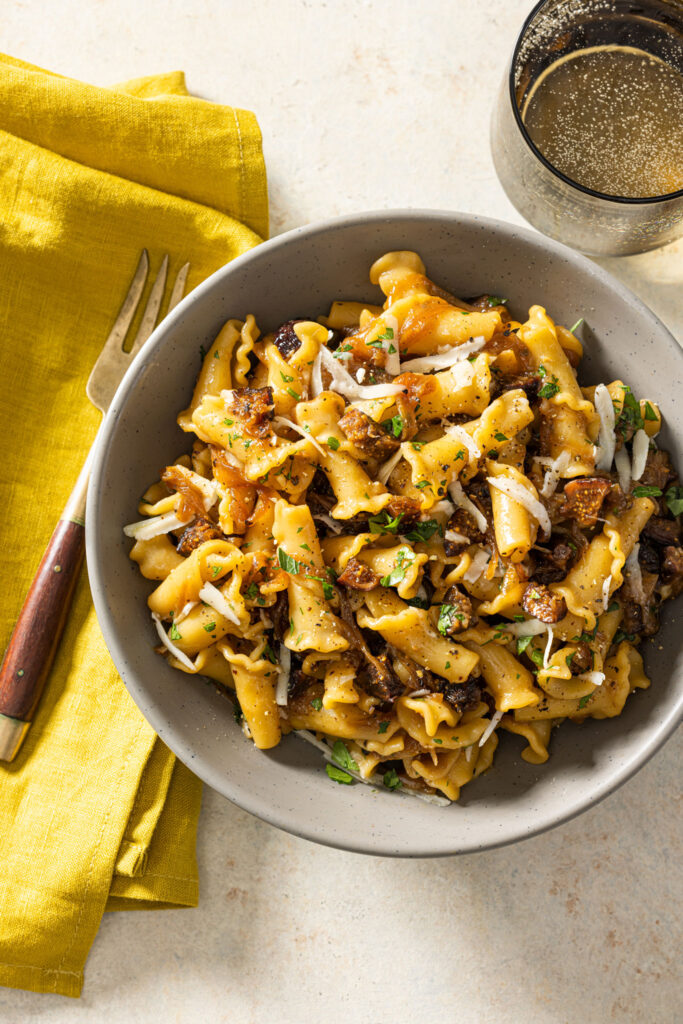What do you know about dried fig iron content? Read on to learn more about dried figs iron content and then head to the bottom of the article for my brownie peanut butter fudge cups recipe.
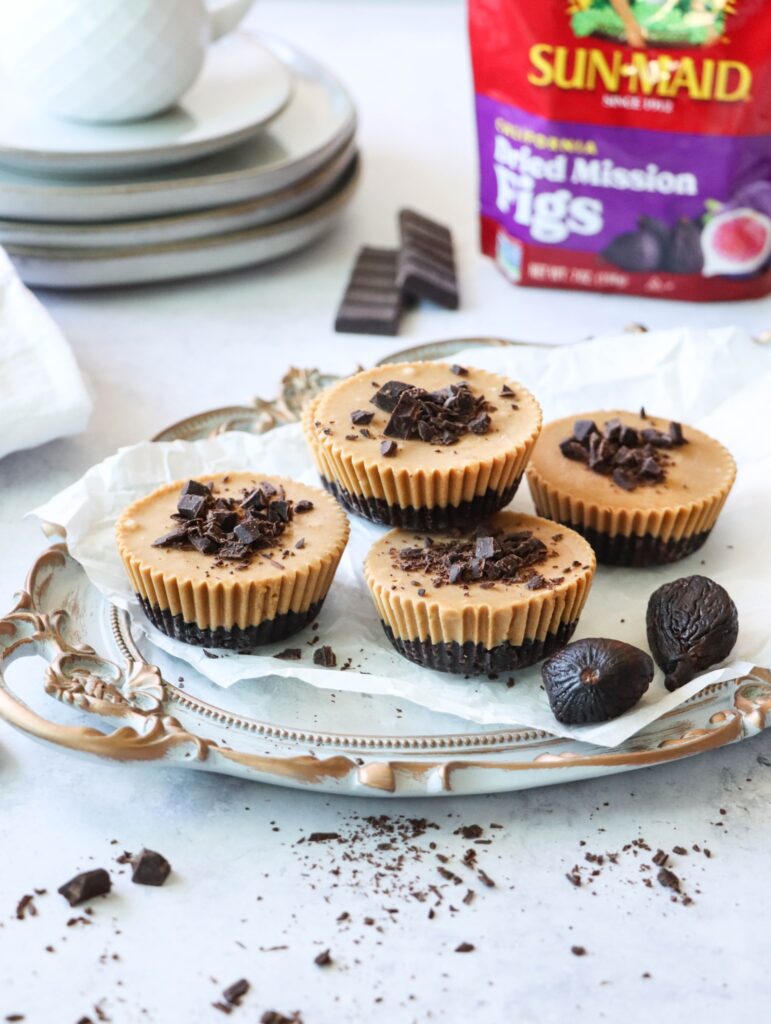
If you’ve been feeling weak and tired way too often, it could be due to iron deficiency. It’s the most common nutritional disorder in the world, especially among women. Our red blood cells only live for about 100 days and our body is constantly trying to create more to replace them using iron.
Iron is needed in the body to transport oxygen in your blood. When your meals don’t contain enough iron, your body will have to work harder to deliver oxygen to your cells, a drop in which can make you feel lethargic. So we always need more spotlight on this particular mineral.
Dried Figs Iron Content
The one big change you can make is to include dried figs in your diet as they’re a rich source of iron available all year round unlike fresh figs, and in a more concentrated dose. However, dried fig iron content is only half of an all-important duo of trace minerals abundant in figs — the other being copper — that work in tandem to maintain proper iron balance in the body. It’s not common knowledge, but copper deficiency can cause anemia as well from the lack of iron mobilization in the body for red blood cell synthesis.
The importance of each of these nutrients in supporting optimal blood health proves the basic rule of nutrition: Most nutrients don’t fly solo, and they work in tandem much better than they work alone.
How Copper is Important to Iron + Its Function as a Hemoglobin Builder
Copper is responsible for important metabolic processes, and at least three of these are essential for iron metabolism:
1. Copper unlocks iron from tissue stores and releases it into the bloodstream in times of need. Without adequate copper, there can be potentially toxic levels of iron build-up in the brain, liver, pancreas and eyes.
2. Copper ensures that iron gets bound to transferrin for delivery to tissues. Transferrin is the main protein in the blood that binds to iron and transports it throughout the body.
3. The iron-regulating hormone Hepcidin inhibits iron release into the bloodstream. This hormone is activated by copper.
In these ways, copper is vital to iron metabolism and homeostasis.
Vulnerable Groups
The most susceptible to iron deficiency are infants, adolescents (14-18 years), and pregnant women because of the heavy demands for iron associated with rapid body growth. It’s also common in pre-menopausal women because of regular loss of iron with menstrual periods. When we lose blood, we lose iron. So dried figs are particularly good to eat when you have your period and are losing a lot of blood.
Iron deficiency occurs in stages:
Stage 1: Diminished total-body iron stores. This mild form begins with a decrease in stored iron, usually either from a low-iron diet or from excessive bleeding.
Stage 2: Reduced red blood cell formation. If the above does not resolve, the next stage is a greater depletion of iron stores and a drop in red blood cells.
Stage 3: Iron deficiency anemia. Eventually, if not resolved, this leads to iron-deficiency anemia where iron stores are used up and there is significant loss of total red blood cells. In this final stage, hemoglobin concentration is affected and drops below the normal range, which is typically 12-15 grams per deciliter for women and 14-16.5 grams per deciliter for men.
What to do:
*According to Food-First Philosophy, whole foods have greater nutritional content than their pill- or powder-form counterparts. In most cases, the vitamins and minerals in food products are better absorbed than those found in supplements. So before you start using supplements to recover your iron stores, be mindful of your diet.
Does dried fig iron content help increase iron?
Eating a well-balanced diet that includes dried figs (abundant both in copper and iron), lean meat, green vegetables, beans, fruits, and whole grain bread is key for everyone, especially if you’re in a vulnerable group for iron deficiency.
*Getting a routine blood work done is key to prevent any further complications, to decide which stage you are in and to respond in a timely manner.
